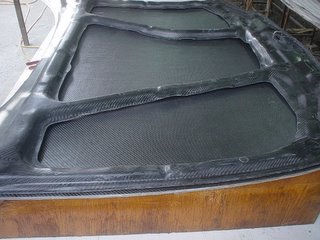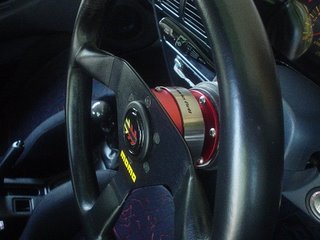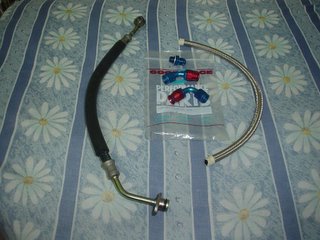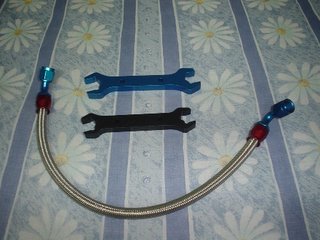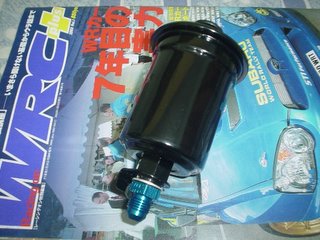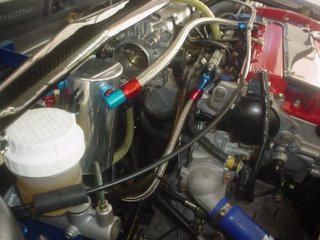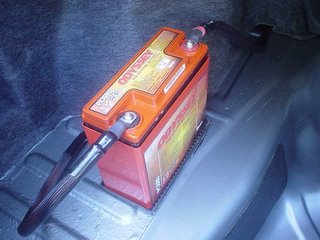Picture of conventional Sparco bonnet pins

It was then when my ever useful Racecar Engineering journal (first article on Aerocatch in December 2004 issue followed by recent article on bodywork fastener technology including Aerocatch in January 2006 issue)led me to a new state of the art bonnet pin called Aerocatch.
The Aerocatch was developed by UK Devon based Specialty Fasteners and Components (SFC) together with Exeter University and launched to the market in early 2005. SFC's brief called for a bonnet pin that was flush mounted for better aerodynamics and had a double locking action. The result is manufactured from high strength thermoplastic (injection moulded Grivory HT2V-5H 50% glass reinforced plastic giving a maximum working shear load of 3000N) that can be painted to your bonnet colour. Pressure releases a panel that then draws a sliding pin out of a hole in the end of your bonnet. The double locking action is achieved by first closing the panel and then by pressing on a protruding lever. There are 2 versions of the Aerocatch depending on your preference. The 120 Plush Flush incorporates a 2.5mm tall flange on the top surface of the bonnnet while the 125 Flush is flushed with the bonnet itself. Both models can be ordered with an additional key lock (at additional cost) giving you better security. More details in Aerocatch's web site
The Aerocatch has been proven in competition and won the 2005 BTCC used on the bonnet and boot of Matt Neal's Honda DC5 Integra Type R. With this in mind, myself, Senior, Jacko and David decided to approach SFC and order the Aerocatch. Rest of us ordered the standard 120 Plush Flush while paranoid Senior ordered his with the additional key lock. The bonnet pins dutifully arrived about 1 week later. Picture below of the package

Detailed locking and unlocking instructions behind
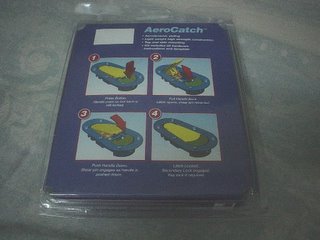
Components removed from package. Stud is available in any colour so long as it's red
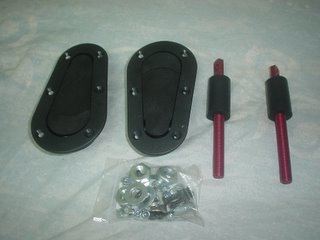
With my bonnet not yet ready, my bro David decided to install the Aerocatch on his Wira 1.8. Installation is unfortunately a pain as a pretty large hole will need to be cut on the bonnet for the flange. The template for the hole is supplied together with the Aerocatch packaging. Picture below shows the bottom surface of the bonnet with the flange partially installed. The decision was made to separately purchase and use stainless steel bolts as I wasn't too thrilled with the supplied blackened mild steel screws. In addition the car's front metal beam where the Aerocatch pin is mounted has to be drilled for the studs and hammered a bit else the flange will not clear. Proton Wira/Satria/Putra/GTI's unfortunately have very little space under the bonnet where bonnet pins are mounted.

Picture below shows top surface of the bonnet with the Aerocatch secured after installation

Another picture with the bonnet closed and Aerocatch secured
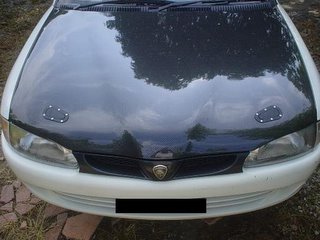
Top Secret Japan has recently started to sell the Aerocatch but at a premium price (12,600 yen for the standard model not including shipping). More details on their website.
I'll follow up with more reports and pictures once I install my Aerocatch.

